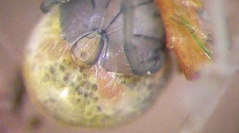

 European Journal of Taxonomy
836 (131) - Pages 131-169
European Journal of Taxonomy
836 (131) - Pages 131-169Initial analyses of DNA barcode data from Norwegian populations attributed to the water mite Lebertia porosa Thor, 1900 revealed large genetic divergence and potentially cryptic species-level diversity. We used one mitochondrial (COI) and two nuclear markers (18S and 28S) as well as comparative morphological analysis to redefine Lebertia porosa, and to further investigate the species boundaries of Norwegian populations of its close relatives. Our results show that Lebertia porosa, as currently defined, consists of multiple species that can be separated by molecular and morphological characteristics. Although we document the presence of the endosymbiotic bacteria Wolbachia in two out of eight screened genetic lineages, we find no evidence of intraspecific genetic divergence caused by Wolbachia infections. The assignment of one of the genetic lineages to the nominal species could be made through morphological comparisons of specimens from the L. porosa type locality with the syntypes of L. obscura Thor, 1900. Thus, the diagnosis of L. porosa is emended and a neotype is defined. Two of the remaining genetic lineages could be assigned to existing names previously regarded as junior synonyms of L. porosa, namely L. obscura (lectotype defined here) and L. gibbosa Lundblad, 1926, which are both redescribed. The outstanding genetic lineages are unnamed, but from our work we conclude that the taxa Lebertia porosa britannica Thor, 1906, L. porosa dorsalis Thor, 1906, and L. porosa italica Thor, 1906 are nomina dubia that cannot be considered junior synonyms of L. porosa as proposed by K. Viets (1956). We also consider L. vigintimaculata Thor, 1900 a nomen dubium, probably identical to L. obscura.